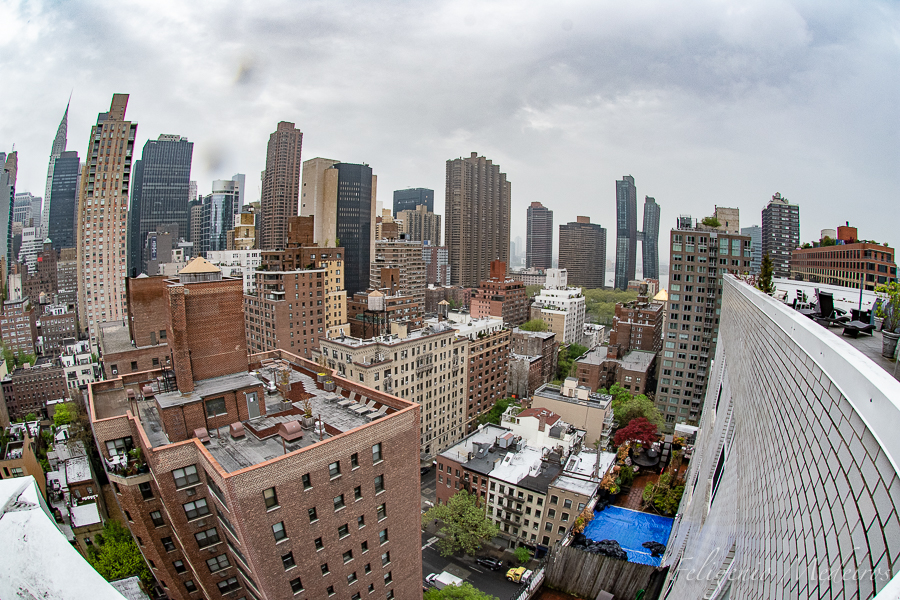New York, 10 Sep 2021 (Lusa) – Former president of a Portuguese civic association Tony Castro told Lusa that the daily fear of a new terrorist attack after September 11 was one of the big changes for the people of the United States, including the Portuguese.
Emigrated in the US for more than 50 years and president of the Portuguese Civic Association of New York State PCANYS at the time of September 11, 2001, Tony Castro considered that concern and fear have taken front and center in the minds of the Portuguese and the population of New York, “symbol of America, the cultural and economic center of the United States.”
“What better target for a terrorist than New York City, to attack and try to destroy the city?”, were the words of the lawyer and prosecutor, former president of the only association covering Portuguese community centers in New York State, 11 in all, and which played a central role in locating Portuguese victims.
With a declaration of “great respect” for the security and ‘law enforcement authorities, Tony Castro has no doubt that New York, after 9/11, was “objective number one” for other terrorist attacks that never came to the surface and that the public has no knowledge of.
All prevented thanks to the “stupendous and extraordinary work” of the NYPD, protection agencies “and security services of the city, the state and the nation,” he declared.
After the tragedy that killed 2,753 people in New York alone, events continued to be held that brought together thousands of spectators, such as Halloween, Thanksgiving or the St. Patrick’s Day festival, but “there was always that fear (…) because you never knew where the next attack was going to be,” described Tony Castro, adding that when you saw an attack “like that” it was “natural to anticipate another one.
In relation to the expatriate Portuguese communities, September 11 was a clear “proof” of the “need for an ‘umbrella’ association” that integrates and brings together community centers, clubs and several other entities linked to the promotion of culture and traditions.
After September 11, the former Portuguese state association PCANYS was the bridge between the Portuguese consulate in New York and the emigrants or Portuguese-Americans, having done, according to the former president, an “extremely useful service for the Portuguese government”.
It all started with a meeting called by the Portuguese Consulate in New York to the PCANYS association, attended by several community leaders and representatives of Portuguese clubs, with the purpose of “ascertaining” and “reporting” how many people of Portuguese origin or family were affected, lost, or killed in the tragedy, a task that took several weeks to complete.
“If the civic association didn’t exist, from several community centers, who would the Portuguese government go to to get the information? It was an extremely difficult project,” considered Tony Castro.
“At that time, the true value of the civic association was seen, which was to try to bring the community together to get information, to pass on to the Portuguese government,” said the now president emeritus of the New York Luso-American Leadership Conference (NYPALC) organization, which PCANYS was part of in 2017.
Tony Castro and former PCANYS vice president Fernando Santos say they remember finding “seven Portuguese fatalities” from New York communities and several survivors, although at the time of the attacks there was talk of five Portuguese dead.
The association, with Fernando Santos’ initiative, proceeded to sell raffle tickets, with the prize of a motorcycle, to raise funds of about ten thousand dollars (8.4 thousand euros) for the affected families and gathered donations from several Portuguese commercial and cultural establishments in the USA. Between 15 thousand and 20 thousand dollars (between 12.7 and 16.9 thousand euros) were given by PCANYS to several Portuguese families who were in more need after the attacks.
The Day of Portugal party and picnic in Westchester County was the highlight of the organization created in 1972 and officially legalized in 1976, and one of the only opportunities to bring together the entire Portuguese community scattered throughout New York State.
Tony Castro recounted a very demanding and difficult duty to support in 2001: because the association’s main activity was the festivities and the promotion of Portuguese culture, prepared months in advance, but the attack created a state of emergency, giving PCANYS an almost life-and-death role.
Four commercial airliners, with hundreds of passengers on board, were hijacked by a group of 19 terrorists on September 11, 2001, and were headed for New York and Washington.
Two planes, 18 minutes apart, crashed into the two Twin Towers in New York City, causing a massive explosion and killing 2,753 people.
The US Department of Defense headquarters, known as the Pentagon, in Washington was also the target of a plane attack, in a crash in which 184 people died, according to the 9/11 Museum.
Another 40 people died in the crash of the fourth plane, which went down in Shanksville, Pennsylvania.
Together with the 19 terrorists responsible for the bombing, the total number of people killed that day was 2,996.
Artigo em Português
Comunidade portuguesa de Nova Iorque foi afetada por receio diário – dirigente cívico
Nova Iorque, 10 set 2021 (Lusa) – O ex-presidente de uma associação cívica portuguesa Tony Castro disse à Lusa que o receio diário de um novo ataque terrorista depois do 11 de setembro foi uma das grandes mudanças para a população dos Estados Unidos, incluindo portugueses.
Emigrado nos EUA há mais de 50 anos e presidente da Associação Cívica Portuguesa do Estado de Nova Iorque PCANYS na altura do 11 de setembro de 2001,
Tony Castro considerou que a preocupação e receio tomaram lugares dianteiros na mente dos portugueses e da população de Nova Iorque, “símbolo da América, o centro cultural e económico dos Estados Unidos”.
“Que melhor objetivo para um terrorista do que Nova Iorque, para atacar e tentar destruir a cidade?”, foram as palavras do advogado e procurador de justiça, ex-presidente da única associação que abrangia os centros comunitários portugueses, no Estado de Nova Iorque, 11 no total, e que teve um papel central na localização de vítimas portuguesas.
Com uma declaração de “grande respeito” pelas autoridades de segurança e de ‘law enforcement’ (execução da lei e manutenção da ordem pública), Tony Castro não tem dúvidas de que Nova Iorque, depois do 11 de setembro, foi “objetivo número um” para outros ataques terroristas que nunca chegaram à superfície e de que o público não tem conhecimento.
Tudo prevenido graças ao “trabalho estupendo e extraordinário” da polícia de Nova Iorque, agências de proteção “e serviços de segurança da cidade, do Estado e da nação”, declarou.
Depois da tragédia que matou, só em Nova Iorque, 2.753 pessoas, continuaram a realizar-se os eventos que reuniam milhares de espetadores, como o ‘Halloween’, o Dia de Ação de Graças ou o festival de St. Patrick, mas “havia sempre aquele receio (…) porque nunca se sabia onde seria o próximo ataque”, descreveu Tony Castro, acrescentando que quando se via um ataque “daquela maneira”, era “natural antecipar outro”.
Em relação às comunidades portuguesas expatriadas, o 11 de setembro foi uma clara “prova” da “necessidade de uma associação ‘umbrella’” que integra e junta centros comunitários, clubes e diversas outras entidades ligadas à promoção da cultura e tradições.
Depois do 11 de setembro, a antiga associação estadual de portugueses PCANYS foi a ponte entre o consulado português em Nova Iorque e os emigrantes ou luso-americanos, tendo feito, segundo o antigo presidente, um “serviço extremamente útil para o Governo” português.
Tudo partiu de uma reunião convocada pelo Consulado português de Nova Iorque à associação PCANYS, com a presença de vários líderes comunitários e representantes de clubes portugueses, com o propósito de se “averiguar” e “reportar” quantas pessoas de origem ou família portuguesa foram afetadas, perdidas ou mortas na tragédia, tarefa que demorou várias semanas a completar.
“Se não existisse a associação cívica, de vários centros comunitários, a quem é que o Governo português se iria dirigir para conseguir a informação? Era um projeto extremamente difícil”, considerou Tony Castro.
“Nessa altura, viu-se o verdadeiro valor da associação cívica, que foi tentar reunir a comunidade para conseguir informação, para passar ao governo português”, disse o agora presidente emérito da organização Conferência de Liderança Luso-Americana de Nova Iorque (NYPALC), que a PCANYS integrou em 2017.
Tony Castro e o antigo vice-presidente da PCANYS Fernando Santos dizem lembrar-se de terem sido encontradas “sete vítimas mortais portuguesas” das comunidades de Nova Iorque e vários sobreviventes, embora na altura dos atentados se tenha falado em cinco portugueses mortos.
A associação, com iniciativa de Fernando Santos, procedeu à venda de rifas, com o prémio de uma motorizada, para angariar fundos de cerca de dez mil dólares (8,4 mil euros) para as famílias afetadas e reuniu donativos de vários estabelecimentos comerciais e culturais portugueses nos EUA. Entre 15 mil e 20 mil dólares (entre 12,7 e 16,9 mil euros) foram entregues pela PCANYS a várias famílias portuguesas que se encontravam em mais necessidade depois dos atentados.
A festa e piquenique pelo Dia de Portugal no condado de Westchester era o ponto alto da organização criada em 1972 e legalizada oficialmente em 1976 e uma das únicas oportunidades de reunir toda a comunidade portuguesa espalhada pelo Estado de Nova Iorque.
Tony Castro relatou um dever muito exigente e difícil de dar apoio em 2001: porque a principal atividade da associação eram os festejos e a promoção da cultura portuguesa, preparados com meses de antecedência, mas o atentado criou um estado de emergência, dando uma função de quase diferença entre a vida e a morte para a PCANYS.
Quatro aviões comerciais, com centenas de passageiros a bordo, foram sequestrados por um grupo de 19 terroristas no dia 11 de setembro de 2001 e foram direcionados para Nova Iorque e Washington.
Dois aviões, separados por 18 minutos, colidiram com as duas Torres Gémeas em Nova Iorque, provocando uma explosão de grandes dimensões e matando 2.753 pessoas.
A sede do Departamento de Defesa dos EUA, conhecida como Pentágono, em Washington também foi alvo de ataque com um avião, num acidente em que morreram, segundo o Museu 9/11, 184 pessoas.
Outras 40 pessoas morreram no acidente do quarto avião, que caiu em Shanksville, no Estado da Pensilvânia.
Em conjunto com os 19 terroristas responsáveis pelo atentado, o total de pessoas mortas naquele dia foi de 2.996.
*** Elena Lentza, Lusa news agency ***
EYL // VM
Lusa


